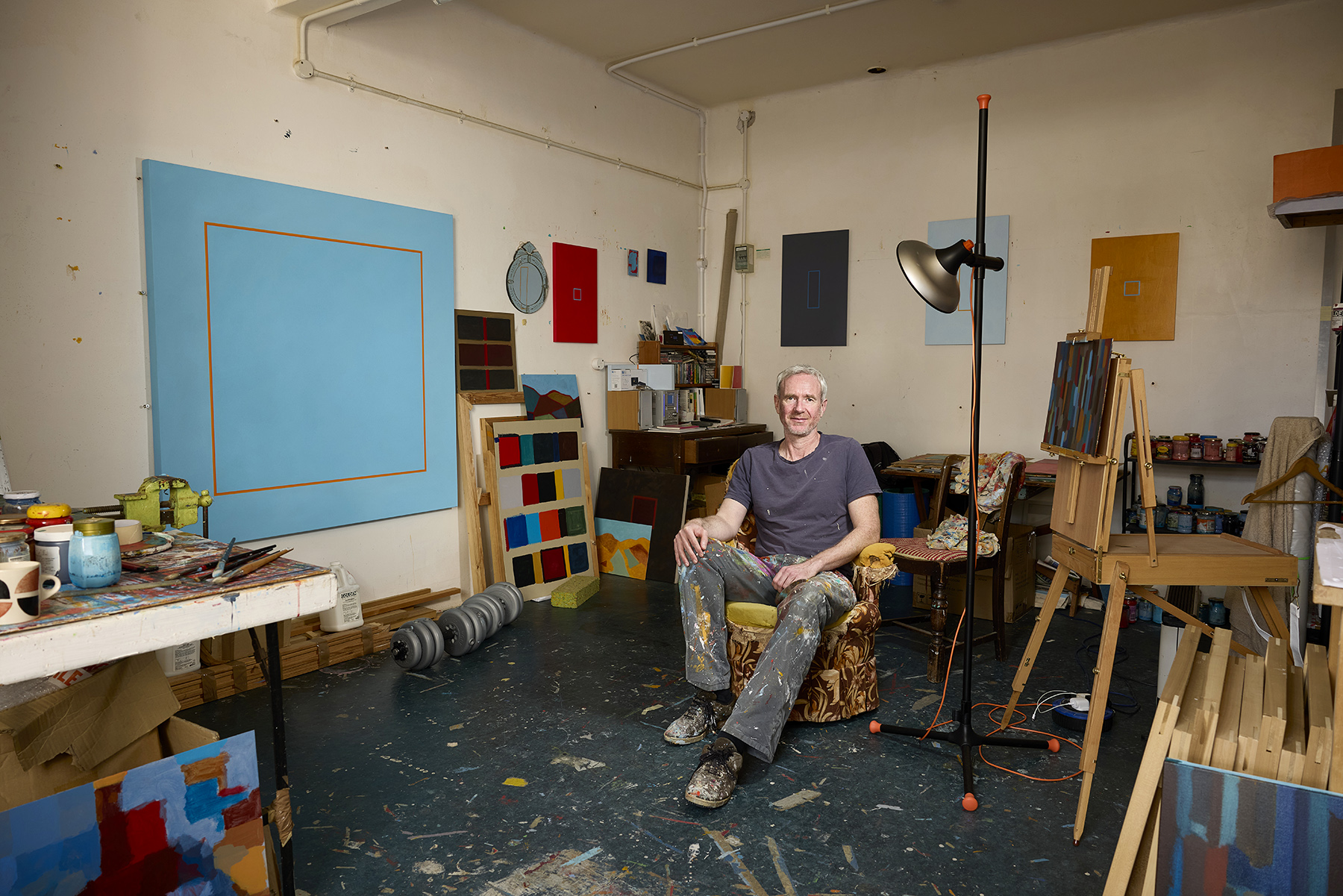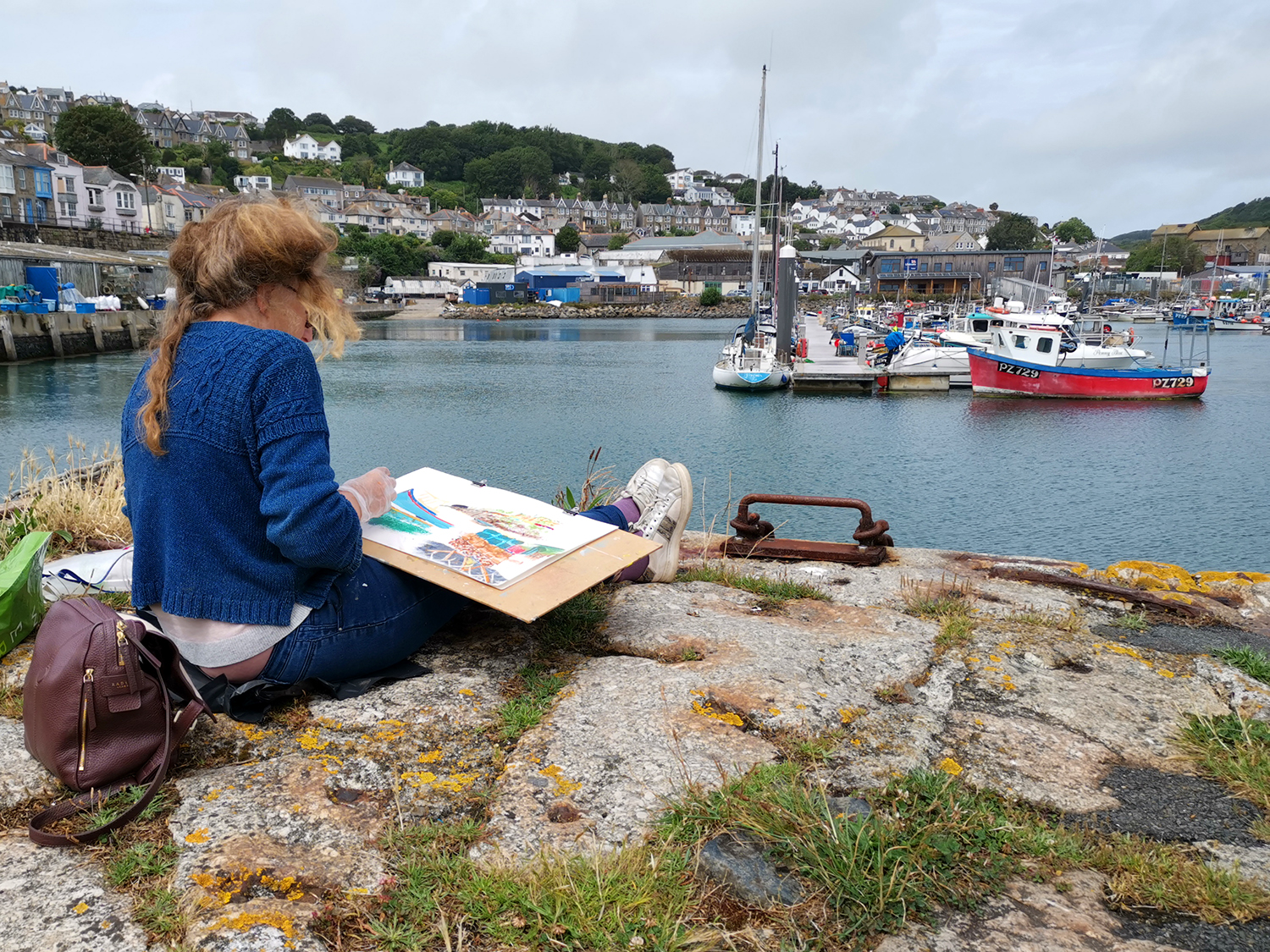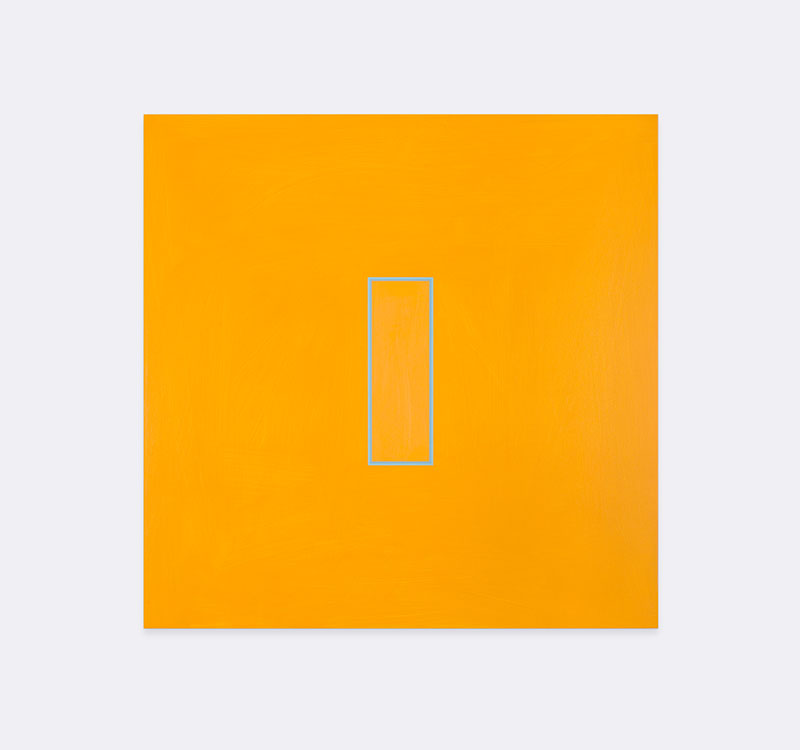You're known for your use of colour. Do you have a favourite colour combination?
That’s a tremendously difficult question! I’ve spent a lot of time on the north coast of Cornwall recently, and every time I'm struck by the beautiful Mediterranean blue of the sea. I love driving over the hill from Madron and seeing that expanse of colour unfold.
Right now you’ve got this really lush pale green, too, against the grey of the cliffs. That green will turn to a lovely ochre as the fields get scorched with the summer sun. And then there’s the gorse! So all those colours will likely trickle into new paintings. The colours immediately around me can definitely feed into my work in different ways.
I didn’t want to follow the abstract expressionism of my grandad and my dad. I always wanted to try a different route, which is why I looked to influences from America. But as you get older I suppose you mellow out a bit. It seems a bit daft to not appreciate all this incredible colour we have around us in Cornwall.

Portrait of Luke Frost by Chris Frazer Smith
What was it like growing up in such an artistic family? Your grandfather being Sir Terry Frost and your father, Anthony Frost.
Dad was making art all the time, and of course there were paintings all over the walls. Pretty much every day after school my brother and I would go to my granddad’s studio at the top of Newlyn. In school holidays we’d go and have breakfast there and Dad and Grandad would be talking about the art world, who they liked and disliked. Then they’d invariably end up complaining about dealers! But it was all very good-natured.
We’d visit lots of other artists or collectors in their homes, too, in Cornwall and around the whole country. So as kids we were completely immersed in that world.
Do you think their use of colour directly influenced your work?
As colourists they most likely influenced my language in colour. All my drawings from when I was a kid were really colourful. But I think the thing I picked up most from growing up in that environment was how to really look and see things.
These days, I might go to France and notice the colours of the houses and roofs, or old clapped out French CV’S or old doors. I might go to see the shows of other artists and that feeds into my colour references too. I take loads of photos but I have a lot of remembered references too.

So studying art seemed like an obvious choice?
Actually, I was really interested in history! I enjoyed art too, but history fascinated me. But then I got an unconditional place for the Foundation course in Art at Falmouth. I thought I would just try it for a year and then do history.
During that year though I realised that creating art gave me a real buzz – the kind of feeling I imagine musicians or performers get. It gets you, that feeling. I also really enjoyed the social side of Art College. I felt that these were my people. I realised then that this was the area of life I wanted to live in. So I did my degree at Bath Art College. I still get my fix of history through books and the radio.
Are there any specific artists or mentors who have inspired you?
The American minimalists, like Dan Flavin, Donald Judd and the abstract expressionist Barnett Newman were really influential as I was starting out, particularly with the optical side of my work. I was fascinated by Flavin’s fluorescent lights and the way they make a room react with those lights and with each other. I then experimented with how I could do something similar in paint.
I talk about this when I’m teaching at Newlyn School of Art – I think it’s so useful to look at the work of these artists.
Actually, that process of trying to clarify and describe what I do and who has influenced my work was such a useful thing to do. It took me ages to work out a simplified process of working with colour for the course. It made me revisit a lot of work and artists I hadn’t looked at for a long time, and that re-inspired me too.


I remember doing your course at Newlyn School of Art, and layering squares of colour ontop of eachother. It was incredible how some of the colours literally vibrated against one another. Is this how you work too?
I took some influences from Josef Albers for that particular exercise. He was a German-born American artist and teacher. He taught this exact technique.
It’s not something I had done for myself before. I have a large envelope full of paint swatches that I’ve painted on card. I just throw them on the floor and move them around. There’s a wonderful element of chance in it. Although, thinking about it, the way we do it on the course is probably a much better way. I should really do that myself!
What do you enjoy most about teaching at Newlyn School of Art?
It surprised me a bit in the beginning how much teaching at the school inspired me and my work. Over the years I have found that I produce a lot more interesting work immediately following the course. I think in a way because I’m teaching myself too.
The participants have a tremendous range of skill and experience, and sometimes they ask really challenging questions which I don’t know the answer to – questions that I actually need to ask of myself! So we end up finding the answers together, which becomes very collaborative and fascinating.
I just love everyone’s reactions when they get the same buzz that I get from colour combinations – they start to get it. Everyone becomes really enthusiastic and things come together really quickly. Suddenly you find there’s a room full of colour, and that’s really stimulating. Invariably on the second morning I arrive to find everyone has arrived early and is already getting stuck in!
Your Exploring Colour course has time in the studio and on location. Where do you most like to take the students when you head out?
We tend to head down to Newlyn Harbour. It has an amazing array of colour with all the freshly-painted fishing boats alongside the old decrepit ones with faded, flaking paint. Then there's the neon-bright buoys and nets. It is also very close-by and tucked away, so you can get on with painting without fear of people looking over your shoulder. You can’t beat it really.

What do you think the students get out of the course?
On the first morning of my course we have a raft of quite formulaic experiments to ‘get our eyes in’ as it were. I can often see people tightening up, trying to get everything ‘correct’, when actually the key is to simply get the paint down and allow for experimentation. It’s through the accidents that we often encounter something really interesting.
You might put a colour down and think it looks dreadful, until you notice that everything around it looks great, and you realise that it was exactly the right colour in the first place. That’s the biggest takeaway really – that you just can’t over-think this kind of work, you just need to relax into it and be playful.
As the course is just two days, it's super focussed; it is simply about your use of colour and how to take that and use it in your work in your own time. It is really interesting to see how much more skilful the participants are by the second day.

Deep Primary Cyan Volts, Luke Frost
What is your favourite part of the painting process?
The emotional side of exploring colour is really important to me. I really enjoy mixing colours and seeing how they react with each other. There’s that tension and possibility. I find that really exciting. But it’s that moment when everything comes together that really keeps me interested. It just suddenly clicks, and you can’t beat that feeling.
Luke Frost was speaking to Kari Herbert.
Find out more about his course, Exploring Colour, here.